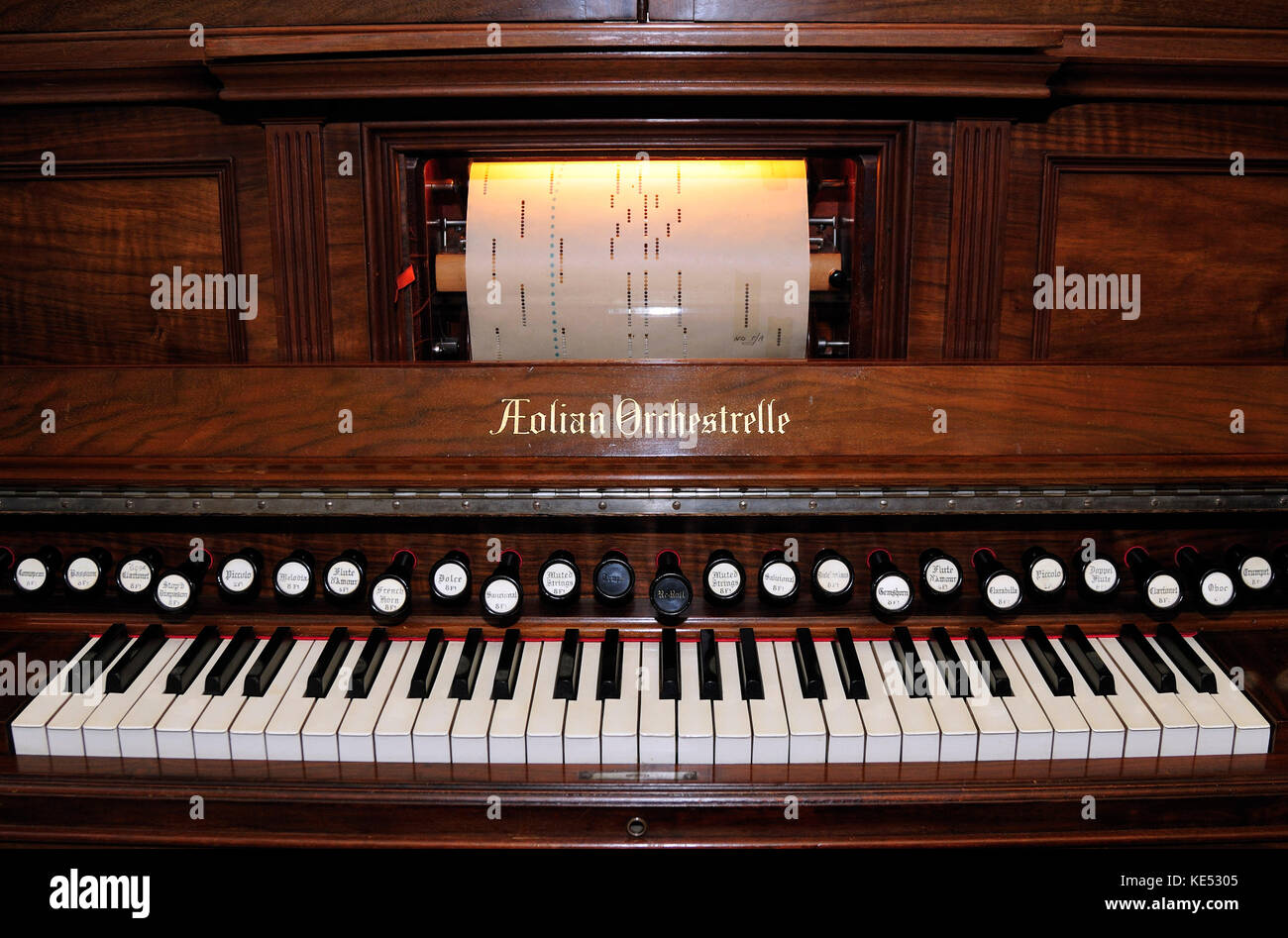
1900 after the firm increased its production of pianolas. Expansion of the Aeolian Company plant south along Tremont Street was completed starting ca. A five-story brick stairwell is located on the building’s east elevation, however, this was not constructed until the 1920s. This measures 49’ x 66’ and largely mimics the details of the earlier blocks.

A stone plaque above the entry reads “1887.” A painted sign that reads “THE AEOLIAN ORGAN AND MUSIC COMPANY” spans the third floor of the north elevation, however, this has faded to a point of near illegibility.Ī four-and-a-half-story red brick addition was erected at the eastern end of the plant along Cambridge Street ca. The factory’s primary entrance is located on the north (Tremont Street) elevation and is set within a gabled brick portico with a flat-arch opening, stone keystones, and brick corbels. The original plant is of standard brick mill construction and has a raised basement level, circular masonry wall anchors, segmental-arched window openings with stone wills, a corbelled and denticulated brick cornice, and a flat roof. The manufacturing blocks form a unified L-shaped footprint with 102’ of frontage on Tremont Street and 138’ of frontage along Cambridge Street. The earliest section of the plant is that situated immediately southwest of the corner of Tremont and Cambridge Streets, which consists of three red brick manufacturing blocks and an associated powerhouse erected in 1887. The Aeolian Company plant is comprised of approximately ten primary adjoining and freestanding blocks located at the southeast corner of the intersection of Tremont and Cambridge Streets.

The plant presently stands largely vacant, however, a small percentage remains occupied by commercial tenants. After the Aeolian Company’s equipment was removed, the Tremont Street complex was subsequently occupied by a variety of businesses, including the General Electric Company, which leased the factory during the early 1950s. The firm’s Meriden plant was closed and all activities located there moved to New Jersey in 1930, by which time employment at the Connecticut plant had been reduced to some 100 workers.
#AEOLIAN PLAYER PIANO MODELS SERIES#
While the onset of the Great Depression in 1929 effectively killed the player piano business, the Aeolian Company survived the period and its hardships through a series of consolidations and mergers during the 1930s. Sales of player pianos peaked in the United States in 1924, largely as a result of the increasing accessibility of radios, phonographs, and moving pictures. Meriden was home to two of the most prominent American producers in this period, with the other entity being the Wilcox and White Organ Company, which was located on the north side of Cambridge Street opposite the Aeolian Company plant. The popularity of player pianos and similar automatic instruments grew significantly through the 1910s before reaching an apex during the 1920s. By 1918, this work was supplemented by the manufacture of not only player piano and organ hardware, but also phonograph motors, parts, and records. The Meriden factory employed over 500 workers and manufactured the majority of music rolls used on all brands of automatic instruments used in the United States and abroad at the time.

In addition to the Meriden plant, these included four plants in New York City, one in Aeolian, New Jersey, and one in Worcester, Massachusetts. By 1906, the Aeolian Company had acquired a number of its competitors and operated seven factories throughout the United States. The Aeolian Organ and Music Company originally erected its Meriden plant for the manufacture of the perforated music rolls used in its organs, however, the plant was significantly expanded after the firm introduced a successful line of player pianos, known as pianolas, in 1895.įollowing the induction of the pianola, the Aeolian Organ and Music Company was reorganized as the Aeolian Company. Tremaine, who originally founded Mechanical Orguinette for the production of automated reed organs in 1878.

The firm manufactured automatic organs and music rolls and was formed as a result of the merger of the Mechanical Orguinette Company of Greenpoint, New York, and the Automatic Music Company of Boston, Massachusetts. The Aeolian Company was originally established in 1887 as the Aeolian Organ and Music Company.


 0 kommentar(er)
0 kommentar(er)
